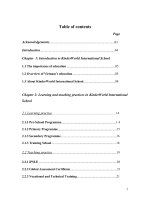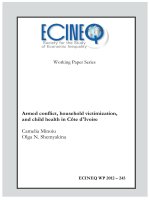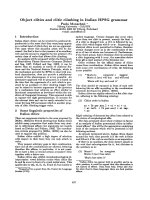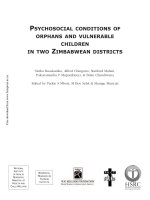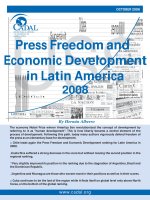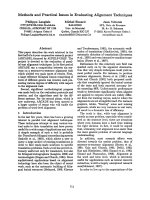Taxation and Governmental Finance in Sixteenth-Century Ming China doc
Bạn đang xem bản rút gọn của tài liệu. Xem và tải ngay bản đầy đủ của tài liệu tại đây (4.88 MB, 403 trang )
CAMBRIDGE STUDIES IN
CHINESE HISTORY, LITERATURE AND INSTITUTIONS
General Editors
PATRICK HANAN & DENIS TWITCHETT
Taxation and Governmental Finance
in Sixteenth-Century Ming China
Other books in the series
GLEN DUDBRIDGE: The
HsUyu
Chi:
A Study of Antecedents
to the Sixteenth-Century Chinese Novel
STEPHEN FITZGERALD: China and the Overseas Chinese: A Study
of Peking's Changing Policy, 1949-1970
CHRISTOPHER HOWE: Wage Patterns and Wage Policy in
Modern China, 1919-1972
DIANA LARY: Region and Nation: The Kwangsi Clique
in Chinese Politics, 1925-1937
Taxation and
Governmental Finance in
Sixteenth-Century
Ming China
by
RAY HUANG
Professor
of History, State
University
College,
New Paltz, New York
CAMBRIDGE UNIVERSITY PRESS
CAMBRIDGE UNIVERSITY PRESS
Cambridge, New York, Melbourne, Madrid, Cape Town, Singapore, Sao Paulo, Delhi
Cambridge University Press
The Edinburgh Building, Cambridge CB2 8RU, UK
Published in the United States of America by Cambridge University Press, New York
www.cambridge.org
Information on this title: www.cambridge.org/9780521104876
© Cambridge University Press 1974
This publication is in copyright. Subject to statutory exception
and to the provisions of relevant collective licensing agreements,
no reproduction of any part may take place without the written
permission of Cambridge University Press.
First published 1974
This digitally printed version 2009
A catalogue record for this publication is available from the British Library
Library of Congress Catalogue Card Number: 73-79311
ISBN 978-0-521-20283-1 hardback
ISBN 978-0-521-10487-6 paperback
Contents
List of figures page vii
List of tables viii
Preface by D. C. Twitchett x
Acknowledgements xii
A note on weights and measures xiv
The Ming emperors xv
Map of Ming provinces xvi
1 Fiscal organization and general practices 1
I Governmental organization 4
II Rural organization and basis of taxation 32
2 The heritage of the sixteenth century and major fiscal problems 44
I The level of state income and modifying factors 46
II Land and population data 60
III The maintenance of the army 63
IV The monetary problem 69
3 The land tax—(i) Tax structure 82
I The complexities of the tax structure 84
II Regional variations 98
III The service levy and its partial absorption by the
land taxes 109
IV Further modifications of the tax structure 134
4 The land tax—(ii) Tax administration 141
I Tax administration by the local government 142
II Factors affecting the general administration 154
[v]
vi Contents
III The level of collection page 163
IV Disbursement of tax income 175
V A final analysis of the land tax system 182
5 The salt monopoly 189
I The mechanism of the salt monopoly 189
II Governmental control and manipulation 195
III Administrative cycles in the sixteenth century 205
IV Revenues, salt prices, and their effects on consumers 212
V Responsibility for the failure 221
6 Miscellaneous incomes 225
I Revenues from commerce and industry 226
II Administrative income 244
III Cash income from commutation of services and supplies 252
IV Non-cash income 257
V Summary of miscellaneous incomes 262
7 Financial management 266
I The ministry of revenue in the sixteenth century 268
II Inter-provincial and inter-ministerial administration 277
III Appropriation of military supplies 284
IV Fiscal retrenchment under Chang Chii-cheng 294
8 Concluding observations 306
I The risks of over-simplification 307
II Ming financial administration and its place in Chinese
history 313
List of abbreviations 324
Appendixes
A. Landed properties not subject to regular taxation 325
B.
Customary fees and extra services collected by the
magistrate of Shun-an county, Chekiang, 1561 327
C. Barter rates and excise tax on each yin of salt, 1535 328
D.
Partial returns of the land survey of 1581, as recorded
in Ming Shih-lu 329
Notes to the text 331
Bibliography 361
Glossary index 377
General index 383
Figures
1 Ming provinces page xvi
2 The Grand Canal (Ts'ao Ho), ca. 1610 54
3 Land tax structure in the late sixteenth century 83
4 Diagram showing distribution of tax revenue 182
5 Northern frontier army posts in the late sixteenth century 289
[vii]
Tables
1 Financial burden to the taxpayer of tax grain delivered or
commuted, for four prefectures in South Chihli, ca. 1585 page 101
2 Service levy collection in Chang-chou prefecture, Fukien, 1572 126
3 Service levy distribution in six counties in the southeastern
provinces, 1572-1621 127
4 Service levy distribution in three counties in north
China, 1608-20 130
5 Quotas of fish duty and local business tax of Yung-chou
prefecture, Hukwang province, 1571 140
6 Provincial tax quotas in piculs of grain based on the
tabulation of 1578 164
7 Estimated land tax rates of Hang-chou prefecture in 1572 167
8 Estimated land tax rates of Fen-chou prefecture in 1608 169
9 Estimated land tax collection and disbursement in piculs of
grain, ca. 1578 177
10 Distribution of land tax revenue from Lin-fen county
1591:
in grain 178
11 Distribution of land tax revenue from Lin-fen county
1591:
in silver 178
12 Distribution of land tax revenue from Wu-hsien county
1575:
in grain 180
13 Cash income from salt monopoly, as of 1578 214
14 Estimated annual income of the salt monopoly, ca. 1575-1600 216
15 Miscellaneous incomes, ca. 1570-90 227
16 Collection quotas of eight inland customs stations,
1599-1625
231
17 Collection offish duty, 1578 245
18 Estimated annual proceeds from miscellaneous incomes,
ca. 1570-90 263
19 Reported annual revenues from miscellaneous sources of
income of the T'ai-ts'ang Treasury, ca. 1570-90 265
20 Reported disbursement of the T'ai-ts'ang Treasury, 1551-7 270
[ viii ]
List of tables ix
21 Reported revenues of the T'ai-ts'ang Treasury, 1567-92 page 270
22 Reported deficits of the T'ai-ts'ang Treasury, 1583-90 270
23 Estimated basic revenues of the T'ai-ts'ang Treasury,
ca.
1521-90 271
24 Cash disbursement in Peking by the T'ai-ts'ang Treasury,
ca.
1580 276
25 Major items of supply disbursed by the fourteen frontier
army posts in 1575 291
26 Revenues of the fourteen frontier army posts, 1578 291
Preface
When some twenty years ago I finished the first draft of my own study of
T'ang financial administration, I began to undertake the preliminary
reading for a similar study of the Ming period, feeling that it would be
possible to pose and answer many questions which cannot even be
formulated in detail for earlier periods because of the lack of evidence.
I soon found myself frustrated by the complexity of the task. The sheer
bulk of source material which has to be covered is daunting in
itself,
and
since then far more of the Ming historical literature has been made
generally accessible. But in addition the subject matter proved to be
infinitely more complicated than in the case of the T'ang. The main problem
was that whereas the earlier dynasties had systematically attempted to
impose a uniform and universal set of comparatively simple institutions
throughout their empire, and incorporated these in a tightly drafted
system of centrally codified administrative law, the gradual abandonment
of this concept of uniform government from the late eighth century on-
wards, and the decentralization of control over detailed policy-making and
enforcement, had led by Ming times to a situation of bewildering local
diversity. It had reached the point where in some fields it was no longer
possible to make simple generalizations about the empire as a whole.
Eventually I was side-tracked into other things and abandoned my
plans.
Since Professor Huang and I first met in the early 1960s and began
discussing the subject matter of this book, it became clear that far from
exaggerating the difficulties of the subject, I had underestimated them.
The comparatively straight-forward and clear-cut picture given in the
'Shih-huo chih' sections of the Ming dynastic history, from which I had
gained my own first overall impressions of the subject was gradually
transformed into an infinitely complex and ill-defined mosaic of often
apparently unrelated detail.
Although many detailed articles and a few important large-scale studies
of individual aspects of Ming finance have appeared during the past
decades in China and Japan, Professor Huang's is the first attempt in any
[x]
Preface xi
language to give a general account of financial policy, placing this mass of
newly discovered detail in a broader historical perspective.
The reader may sometimes find that his account of certain aspects of
policy contains apparent anomalies and even internal contradictions. This,
however, reflects the fact that in many fields government policy and local
practice did contain glaring inconsistencies and anomalies. Ming govern-
ment, notably effective as it was in many respects, was not a tidy and uni-
form system, particularly at the local level. The detail in this volume,
overwhelming as it may sometimes appear, is also far from complete. But
at the present primitive stage of our knowledge of the subject, and of the
detailed history of the period, it is important to present the evidence in full,
rather than rushing to erect facile generalizations. The study aims to
present a general framework to which further detail may be related, not to
provide yet another grand historical pattern.
It is to be hoped that not only will it stimulate further detailed studies
of financial history, but that it will also provide reliable guidelines on these
aspects of government policy for the growing numbers of young historians
working on late Imperial China. In particular it should help scholars
working in the important area of local history in Ming and Ch'ing times
to interpret the perplexing masses of statistical and administrative detail
included in local gazetteers and elsewhere.
DENIS TWITCHETT
1973
Acknowledgements
It is my sincere hope that the publication of this book will bring some
measure of satisfaction to those who, during the past several years when it
was under preparation, generously helped me in many different ways:
provided inspiration and guidance, supplied bibliographical materials,
answered specific questions, read parts of the manuscript and offered
valuable criticisms. Any errors which remain are of course my own.
My thanks are due to Dr William Theodore de Bary, Vice-President and
Provost, Columbia University; Professor Wing-tsit Chan, Chatham
College; Professor Albert Feuerwerker, University of Michigan; Professor
Ping-ti Ho, University of Chicago; Professor James T. C. Liu of Princeton
University; Professor John Meskill, Barnard College; Professor F. W.
Mote, Princeton University; Dr Joseph Needham, Master of Gonville and
Caius College, Cambridge; Professor Morris Rossabi, Case Western
Reserve University; Reverend Henry Serruys; Mr Wei-ying Wan of the
East Asian Library at the University of Michigan; Dr Eugene Wu of the
Harvard-Yenching Library and his
staff,
among them in particular
Mr George C. Potter; Dr K. T. Wu, Division of Orientalia of the Library
of Congress; and Professors Lien-sheng Yang and Ying-shih Yu, both of
Harvard University.
Professor John K. Fairbank and his committee at the East Asian
Research Center, Harvard University, gave me a fellowship grant in 1970
when I was completing the first draft. In particular I wish to express my
gratitude to Professor Fairbank for his kindness in advising me how to
deal with the subject matter. In his opinion, a study in depth of a specific
topic may, by extension, be related to the study of other topics within the
same area, without the necessity of covering these in similar detail.
Originally I had intended to write on the fiscal administration of the entire
Ming period, but the material had a constant tendency to get out of
control, and on Professor Fairbank's advice I eventually arrived at the
present format. Having benefited from his insight, I record this here with
appreciation, in the hope that others may continue to benefit from it.
For a great many years Professor and Mrs Chao-ying Fang have been
[xii]
Acknowledgements xiii
giving valuable guidance to scholars in the field of Chinese studies. Having
the good fortune to work closely with them in 1967 on the Ming Biographi-
cal Project, I took every advantage of their immense knowledge of the
Ming dynasty and their willingness to share it with others. Dr L. Carrington
Goodrich, Professor Emeritus at Columbia University and editor of the
Ming Biographical Project, has at my request read practically every word
I have written for several years. His criticism is always offered in a tone of
affection. Charles O. Hucker, Professor of History at the University of
Michigan, is a special friend. I made his acquaintance by correspondence
more than twelve years ago when I was a Ph.D. candidate, and have never
ceased to be grateful for his continuing help since then. Professor Denis
C. Twitchett, Cambridge University, has helped me to prepare the final
draft for publication and graced the present volume with a preface. My
indebtedness to them all is great.
The basic research for this book was done several years ago with free
time obtained through fellowship grants. An area study fellowship jointly
sponsored by the American Council of Learned Societies (ACLS) and the
Social Science Research Council (SSRC) covered one term in 1966. Summer
research grants were made available by the Center for Chinese Studies at
the University of Michigan and the Research Foundation of the State
University of New York. My grateful acknowledgement to them, however,
should not be construed to mean that my sponsors endorse the opinions
in this book.
I am grateful for the assistance rendered by Miss Hilary Beattie,
Research Fellow at Newnham College, Cambridge. She has made a signifi-
cant contribution to improving the style of my writing; I alone am respon-
sible for the inadequacies inherent in the original draft. Although I have
retained American spelling in this volume, I hope that the text will be
equally acceptable to readers on both sides of the Atlantic.
Closing this acknowledgement, I would like to extend my deepest
appreciation to my wife, Gayle, who for seven years has shared my hopes
and endured the hardships that I brought to the family through my
interest in historical research. Her enthusiasm is always a source of my
strength. Only after completing this book did I get in touch with
Dr Ch'iian Han-sheng. Several articles recently published by him in the
Journal of the Institute of Chinese Studies will be of invaluable interest
to readers of this volume. While I am most grateful to Dr Chiian for
sending me off-prints, unfortunately it has not been possible to include
the titles in the present bibliography.
Mulberry Close, Cambridge R. H.
12 July 1973
Weights and measures
The Ming tried to standardize weights and measures. Though metal scales,
weights, and measuring receptacles were issued by the ministry of works
no examples have yet been discovered. So far the closest thing found is an
ivory scale made in the Chia-ching period, which, being an engineering
scale, differs from the fiscal standard.
The following equivalents are based on specialist studies of Ming paper
currency and copper coins and weights and measures, and are known to be
relatively accurate, although their absolute accuracy cannot be guaranteed.
1.
Measurement of Length. The cKih, or 'foot', is approximately 12.3
inches.
2.
Weights. The chin, or 'catty', is approximately 1.3 pounds. It is
divided into 16
Hang,
or 'taels', each of which of which is about 1.3 ounces.
3.
Capacity. The dry measuring unit is generally known as the shih,
though some scholars, such as Rieger, Sun and de Francis, prefer to
romanize the term as tan or dan. Here translated as 'picul', it equals about
107.4 liters.
Except for the division of the catty into 16 taels, the fiscal units always
followed the decimal system. Ming accounts do not use a decimal point
but enumerate the fractions of the basic fiscal units by name. Each fraction
of a basic unit has its own special term. For example, a millionth of a tael
is called a wei, and a trillionth a mo. All these cumbersome figures have
been converted into the basic units and whenever 'decimal points' and
'decimal digits' are mentioned they refer to these converted figures.
'Billion' is used to mean one thousand million, and 'trillion' (as in the
preceding paragraph) one million million.
Numbers in the text are, in general, spelled out up to 100, but figures
are used for percentages, units of currency and series of numbers.
[xiv]
The
Ming emperors
Temple name
T'ai-tsu
Hui-ti
T'ai-tsung,
Ch'eng-tsu
Jen-tsung
Hsiian-tsung
Ying-tsung
Ching-ti
Ying-tsung (restored)
Hsien-tsung
Hsiao-tsung
Wu-tsung
Shih-tsung
Mu-tsung
Shen-tsung
Kuang-tsung
Hsi-tsung
Chuang-lieh-ti
Reigned
1368-98
1398-1402
1402-24
1425
1425-35
1435-49
1449-57
1457-64
1464-87
1487-1505
1505-21
1521-66
1566-72
1572-1620
1620 (one
month)
1620-7
1627-44
Era
name
Hung-wu
Chien-wen
Yung-lo
Hung-hsi
Hsiian-te
Cheng-t'ung
Ching-t'ai
T'ien-shun
Ch'eng-hua
Hung-chih
Cheng-te
Chia-ching
Lung-ch'ing
Wan-li
T'ai-ch'ang
T'ien-ch'i
Ch'ung-chen
mm
mx
&m
mm
'Km
itm
mm
&
Ik
81
nm
m^
[XV]
MONGOLIA
LIAOTUNG
(MANCHURIA)j
/
NORTH
T'ai-yuan
«
CHIHLI
SOUTH
/
CHIHLI /"Nanking
/ KWEICHOW
}V~*
y
~ \
Kun-ming
/ /-
N
^-—^"'v/'
<~l~P KWANGTUNG
\
Chinese frontier
provincial boundaries
-n-ruxn Great Wall
of
China
FIG.
1.
Ming provinces.
[xvi
]
1
Fiscal organization and
general practices
Most governmental institutions under the Ming preserved certain features
reminiscent of previous dynasties, the T'ang, Sung and Yuan, yet at the
same time developed distinctive characteristics of their own. The dynasty's
fiscal administration was no exception. Such Ming practices as the employ-
ment of supervising secretaries as fiscal auditors, the organization of six
ministries, the circulation of government
notes,
the utilization of the Grand
Canal as a trunkline connecting the north and the south, the trading of tea
for horses with nomadic groups, and bartering salt under governmental
monopoly for military supplies in the frontier region, were clearly copied
from earlier dynasties. On the other hand the Ming administration saw
more concentration of power in the emperor's hand, smaller administrative
overheads, a greater reliance on agrarian sources for state income and
a stricter control over maritime trade which virtually committed China to
a state of limited seclusion.
The imitation of
the
past was not totally unjustified. In
fiscal
matters all
dynasties in post-T'ang China faced the same fundamental problems. To
secure the durability of the empire, imperial control over the nation's
financial resources had to be firm and thorough. Yet the empire's vastness
and its regional diversities worked against a policy of centralization, as
did pre-modern methods of transport and communications. The gap be-
tween aims and the limited available means of achieving them was not
easily
bridged.
In these circumstances it
was
not surprising that all dynasties
tended to draw on past experience.
The particular style of Ming administration, geared to the concept of
a village commodity economy, could be labelled conservative, and could
indeed in the light of economic development in China in the sixteenth and
seventeenth centuries, be regarded as anachronistic. This conservative
outlook was, however, the inevitable outcome of political centralization
in a vast country under pre-modern conditions.
It must be noted that economic development in China before the Ming
showed considerable regional imbalance. It was based on a few handicraft
industries and on foreign trade, which affected only certain geographical
I [1] HTF
2 Fiscal organization and general practices
areas.
As the Ming administrators saw it, to promote those advanced
sectors of the economy would only widen the economic imbalance, which
in turn would threaten the empire's political
unity.
It
was
far more desirable
to keep all the provinces on the same footing, albeit at the level of the more
backward sectors of the economy. The Ming fiscal policies were largely
determined by this attitude.
Such an approach seems absurd to the modern historian, in that it
sacrificed China's long-term economic growth for the sake of a short-term
political aim. Ming administrators, however, did not have the foresight
to visualize the contributions that industry and commerce could ultimately
render to a modern state. For the small states of Western Europe govern-
ment promotion of industry and commerce could facilitate a swift capitalist
transformation of their economies. In China, which was vastly larger, it
could not have effected such rapid and far-reaching change. Moreover,
unlike the emerging national states in Europe or even the rival feudatories
in Japan, Ming China never placed itself on a competitive basis with its
neighbors; it could therefore afford the price of backwardness. Within
their own horizons Ming administrators saw no compelling reason to
revise their policies. On the contrary, there was good reason for them to
proceed on their traditional course, in perfect accord with the traditional
Confucian doctrine that agriculture alone provided the economic foun-
dation of the state.
The tragedy was that despite their striving for simplicity and uniformity,
and their willingness to base their policies on the minimum level of
economic activity, the Ming administrators never fully accomplished their
purpose. China's internal diversity simply defied any uniform control
from the center, especially in the area of fiscal administration. In agri-
culture, there were wide regional variations in climate, soil, topography,
and labor supply, not to mention the enormous variety of
crops,
differing
market conditions, multiple kinds of land tenure and leases, and the
diverse standards of units and measurements across the country. Legis-
lating from the capital, the Ming court could not take all these factors
into account. Without attempting to reconcile these differences it was to
find that to proclaim a uniform land tax law was one thing and to have it
applied in every corner of the empire was another.
It was generally assumed by many late Ming writers that in the early
years of the dynasty the empire's fiscal programs had been carried out in
full, and that only toward the end did the administration become corrupt.
The assumption is only partially
true.
There is sufficient evidence that even
at the very beginning government regulations were compromised, imperial
decrees discounted, and official data to some extent tampered with. This
was not necessarily the act of dishonest officials. In the early stages it was
due largely to the fact that fiscal schemes conceived from above failed to
Fiscal organization and general practices 3
correspond to conditions at lower levels, or else the desired degree of
centralization exceeded the technical capacities of contemporary govern-
ment. As a result, imperial laws had to be adjusted. Local manipulations
and revisions were necessary. Indeed, in the dynasty's later years deviation
from prescribed procedures became a general practice; by then widespread
abuses were only to be expected.
This lack of exactitude in the fiscal machinery had numerous con-
sequences. An outstanding example was that Ming officials customarily
compensated for shortages in one item of state revenue with funds and
materials derived from another. What we regard as the salt gabelle in
Ming times actually contained portions of the land taxes. After the middle
period the land taxes also became inseparable, if not totally indistinguish-
able,
from several other sources of income. Government income and
expenditures in Ming times can be compared to water channels in a swamp,
in that they had constant tendency to diverge and re-converge.
These complexities do not facilitate our task. Most of the Ming institu-
tions do not lend themselves to precise classification or definition. They
were in flux, their changes being determined in the main by external
environment rather than internal development. They owed more to the
manipulations and compromises of the administrators than to any logical
growth of their own. In this book, the greatest difficulty has been to confine
the material under topical headings without creating a misleading im-
pression that a jigsaw puzzle is a checkerboard. We have therefore, chosen
to rely more heavily on description rather than on tabulation of data. In
places the logical sequence of presentation is slightly modified to suit the
material. Cross references in parentheses mark topics treated in different
chapters or different sections of the same chapter. While this is not the
ideal way of writing a financial history, we hope that it will permit a more
realistic view of the subject.
Similarly a mixed approach is adopted in the present chapter. It may be
noted that throughout the Ming period, except for the reign of Hung-wu,
reorganization of officialdom was seldom attempted. In its span of 276
years the dynasty saw China's commodity economy transformed into
a money economy, taxes in kind and statutory labor largely replaced by
silver payments, and a conscripted army gradually replaced by a recruited
army; yet, surprisingly, few fiscal offices were created in the middle period
of the dynasty and still fewer offices abolished. This was possible because
the functions of government agencies were not always fixed by stature, but
were rather based on customary usage. Administrative procedures more-
over were rarely superseded by new laws. Old and new statutes alike were
simultaneously preserved. The obsolete sections were simply disregarded
and the surviving clauses selectively applied to individual cases according
to the circumstances. All offices in fact went through some kind of evolu-
4 Fiscal organization and general practices
tionary process, their functions being readjusted from time to time, some-
times so smoothly that the change went unnoticed even by contemporaries.
This introductory chapter on the fiscal structure must therefore deal with
its form as well as its dynamics.
I GOVERNMENTAL ORGANIZATION
The nature of the Ming monarchy and its role in public finance
Under the Ming system there was no central authority administering the
empire's finance other than the emperor
himself.
The premiership was
abolished in 1380 and never revived. The grand-secretaries limited their
functions to rescript-drafting. Although they were consulted by the
emperor and did participate in decision-making, they were never officially
accorded any power. The minister of revenue supervised routine fiscal
matters, yet he could never act without prior imperial approval. The
emperor, truly an autocrat, received memorials from a large number of
censors, supervising secretaries and ministerial officials, down to division
heads and section chiefs. Suggestions and criticisms on fiscal matters could
be initiated by practically anyone, regardless of his area of specialization
and current assignment. The emperor was also approached by scores of
imperial commissioners, governors and governors-general. Their proposals
and requests could be handed to the ministry of revenue for comment, or
else,
when important issues were involved, referred to the Nine Ministers'
Conference for deliberation.
1
But the final decision was always the
emperor's own.
In practice, in the course of the dynasty, there were a few persons who
managed to exercise the power reserved to the throne, notably Grand-
Secretary Chang Chii-cheng during the reign of Wan-li, and 'eunuch
dictators' Wang Chen, Liu Chin, and Wei Chung-hsien in the Cheng-t'ung,
Cheng-te, and T'ien-ch'i eras respectively. Yet, although Chang gained his
powerful position through informal arrangements with his fellow officials
behind the back of a youthful emperor, even then the formality of seeking
the sovereign's approval on major and minor matters was not disregarded
(7,
m). The eunuchs, with the indulgence of the emperors, violated virtually
every fundamental law of the empire. All of them were later condemned,
or charged with conspiracy. It is noteworthy that none of the three eunuchs
died a natural death and Chang Chii-cheng was posthumously disgraced.
Outwardly the imperial power could not be delegated and never was.
In general, official and office titles in this work follow Charles O. Hucker,' Governmental
Organization of the Ming Dynasty', Harvard Journal of
Asiatic
Studies,
21
(Dec. 1958),
pp.
1-66. This article is reprinted in Studies of Governmental Institutions in Chinese
History, ed. J. L. Bishop (Cambridge, Mass.
1968).
But the Ming emperors are referred
to throughout by their reign titles rather than temple names.
1,1 Governmental organization 5
Several emperors ascended the throne when they were minors but no
formal regency was ever established for them.
In the realm of fiscal administration some of the matters brought to the
emperor's attention could be exceedingly trivial. Even minor issues - such
as the relocation of a particular business tax station, or from which pro-
ductive area a particular county was to draw its salt supply, or how many
rolls of silk were to be awarded to a foreign tributary mission, - were all
submitted to the emperor for final approval. The sovereign was expected to
attend to all administrative details, the precedent having been established
by the dynastic founder. In one eight-day period Hung-wu is said to have
received 1,660 memorials in which 3,391 issues were discussed.
2
Apparently the founding emperor felt that this personal control over
what seemed to be insignificant matters was justified. In the early years of
the dynasty taxes were collected almost exclusively in kind. The govern-
ment had to avoid the accumulation of tax proceeds at the intermediate
level, in order to avoid over-burdening the service facilities, the weakest
section of the whole fiscal establishment. The solution was for each
revenue-gathering agency to make delivery directly to a dispensing agency;
items of income and expenditure were matched up so as to cancel each
other out. Under this system bulk deliveries were few, but there were
numerous modest-sized consignments of materials and goods moving from
one end of the empire to another. The disposal of each of those small con-
signments, therefore, could not be treated lightly, for each was a thread in
the fiscal fabric. If control over any one of them were relaxed it would
permit precedents to be established that might ruin the whole system. In
later years, owing to deviations from fiscal regulations at the local level,
imperial control over the nation's financial affairs slackened considerably,
but the custom of the emperor attending to minor matters persisted. The
assertion of the imperial prerogative was now limited, however, to those
selected cases which were actually brought to the court's attention.
It seems outwardly strange that, even though after Hung-wu few
emperors effectively exercised their legislative power, and no sweeping
fiscal reforms were ever proclaimed by them, yet toward the end of the
dynasty, taxes in kind and labor services were largely commuted to silver
payments, the fiscal responsibilities of the military bureaucracy were
reduced to a minimum, the ranks of the army were filled with recruited
soldiers and army posts were paid from the capital. It may be added that
even the use of silver in private business transactions, which came to be
universally accepted in the later period, had been forbidden in earlier
years.
The answer to the puzzle is that even though ostensibly the succeed-
ing emperors had in general refrained from revising the dynastic founder's
fiscal legislation, they did authorize occasional exceptions to the established
procedures. Such changes followed a pattern. They usually started with
6 Fiscal organization and general practices
a petition from a lower-echelon bureaucrat, the requested exception
applying to his office alone. The emperor's approval, most likely granted
along with other routine matters, then established the required precedent.
Sooner or later similar petitions were submitted and approved until the
original exception had become a common practice. Thereafter no formal
petition was required; either an imperial decree directed the remaining
offices to follow suit or the latter proceeded to carry out the reform without
explicit approval. In this way a major reform might take several decades
to accomplish. The chiin-yao method (3, m), for instance, took almost
fifty years from the time of its earliest experimental use to become generally
accepted. The Single Whip Reform took even longer, and even at the
collapse of the dynasty it had not attained a final, definite form.
The removal of earlier restrictions, especially when the restrictions could
not be effectively enforced, took much less time. An example is the relaxa-
tion of the use of silver as a common medium of exchange. It started with
a petition from a prefect in Kwangsi whose original proposal applied only
to the legalization of copper cash in private trade (2, in). Apparently, the
precedent-establishing effect quickly caught up with the approval of this
petition and soon the earlier decree forbidding the use of silver bullion,
too,
became defunct.
3
This exercise of legislative power by the Ming
emperors sometimes had a very similar effect to the judiciary decisions
handed down by a supreme court in the Western world.
Another paradox in the administration was that in spite of their auto-
cratic power many later Ming emperors found themselves in a defensive
position vis-a-vis the bureaucrats who raised questions concerning their
spending habits. There were several reasons for this. One was that in the
eyes of the Confucian bureaucrats the private life of the emperor was
a matter of public concern and subject to discussion if not criticism.
Another was that since the early sixteenth century few Ming emperors,
with the notable exception of the last emperor, Ch'ung-chen, had shown
any genuine interest in state affairs. Some of the emperors were either too
indolent to care or too incompetent to make a decision. Thus disagree-
ments between the monarchs and their courtiers on strictly public matters
were few. Controversies were usually related to the emperor's private life.
Thirdly, according to the theory that all under the heaven belonged to the
emperor, the Ming system made no clear-cut distinction between state
income and the emperor's personal income, and between governmental
expenditure and the emperor's expenditure. The sovereign's personal
spending was therefore closely related to public finance. Frequently the
issues raised by the courtiers concerned exorbitant palace expenses,
excessive procurement programs, the misconduct of eunuch commissioners
in charge of those programs, and land grants to the emperor's favorites
and relatives. But since the final authority rested in the sovereign, bureau-
1,1 Governmental organization 7
cratic action was limited to remonstrance, resignation, attempted impeach-
ment of those who carried out the emperor's orders, and exaggeration of
portents as heaven-sent warnings to the wayward emperor. When all these
failed there was no recourse left. Furthermore, in carrying out these steps
the bureaucrats always risked reprisals from the throne.
With the exception of the dynastic founder, who was self-taught, all
Ming emperors received a Confucian education.
4
Thus indoctrinated, they
were expected to follow the frugal standards of their forefathers, to respect
public opinion, and to remain above malice and self-indulgence. The
actual effect of these moral precepts is difficult to gauge. In view of the
unattractive personalities of most Ming emperors it is easy for us to
conclude that the so-called Confucian morality was no more than a fiction.
Yet considering the unlimited power at the disposal of the crown, one
might wonder what would have happened had this power never been
subject to any moral restraint at all.
Grand-secretaries, outwardly powerless, could also exercise considerable
positive influence from behind the throne. It is true that newly-appointed
grand-secretaries serving mature sovereigns were in general more inclined
to be subservient. But by tradition the grand-secretaryship under the
Ming was a long-term appointment. In normal circumstances grand-
secretaries were expected to hold office for life. Many of them did so and
served under several emperors. Because of their prestige and the public
trust which they enjoyed, they could act as intermediaries between the
emperor and the ministerial officials, thus providing a stabilizing force in
the court. There were numerous examples of such senior statesmen in the
early Ming period. Even in the later years towering figures of this kind were
by no means lacking. Chang Chii-cheng's case may be somewhat too
complicated to accord exactly with this description. But Yang T'ing-ho
(in office, 1507-24), who introduced a drastic austerity program in the
court upon the accession of Chia-ching, and Yeh Hsiang-kao (in office,
1607-24), who masterminded the transfer of some 7 million taels of silver
from the emperor's personal treasury to replenish the empty state coffers
in the T'ai-ch'ang-T'ein-ch'i periods, show well how grand-secretaries
could be instrumental in carrying out popular policies and restoring public
confidence.
5
Nevertheless, none of the deterrents to unlimited exercise of imperial
power - including Confucian morality, reverence for the standards set up
by imperial ancestors, public opinion, or the influence of senior statesmen
- had the effect of law. If an emperor chose to defy all these and was
determined to exercise his absolute power to the full, there was no way of
checking him. This situation actually prevailed during the reign of Wan-li.
In the 1590s the emperor dispatched eunuchs to collect business taxes in
the provinces, superseding the civil officials (7, m). Many courtiers, after
8 Fiscal organization and general practices
remonstrating to no avail, handed in their resignations. The emperor was
so annoyed by the opposition that he ignored their resignation requests.
Some officials subsequently left without authorization and the emperor, in
turn, kept the vacant offices unfilled. The sequence of events precipitated
what amounted to a 'constitutional crisis', and the deadlock remained
unbroken until the sovereign's death in 1620.
Palace expenditures and the eunuchs
The complexities of palace expenditures in Ming times can best be under-
stood by first visualizing the layout of the Ming palace complex.
The center core of the palace was the Forbidden City, a walled and well-
guarded compound of about a quarter of a square mile of elegant archi-
tecture, consisting of the residential quarters of the imperial household,
many ceremonial halls, studies, libraries and the office of the grand-
secretaries. Encircling the Forbidden City was the Imperial City, also
walled and restricted, which was in turn surrounded on all sides by the city
of Peking proper. Ministerial offices were located outside the walls of the
Imperial City. Inside the wall, encompassing an area of three square miles,
was a huge maintenance area.
6
Installations inside the Imperial City included treasuries, receiving and
storage depots, material processing and manufacturing plants such as
a bakery, confectionery, dispensary, distillery, leatherworks, tailor's shop,
silversmith's shop, printing shop, dyeing shop, etc. There was even an
arsenal which manufactured firearms and gunpowder. Most of those
supply agencies were manned by eunuchs, some of them exclusively, others
with a handful of civil service officials nominally in charge. Next to
them were other eunuch agencies which, drawing supplies from the afore-
mentioned warehouses and shops, provided household services in the
Forbidden City. Offices of the civil service physically located inside the
Imperial City included the supervising secretariat, which had the function
of inspecting the supply depots, and the court of imperial entertainments,
which was nominally subordinate to the ministry of rites.
The total number of these offices and service and supply installations was
over fifty. Apart from the eunuchs, artisans performing statute labor and
their hired assistants constituted a major portion of the palace population,
which, even in the later fifteenth century, exceeded 100,000. Because the
salaries of Ming officials were only nominal (2, i), the amount of cash
paid to the functionaries by the ministry of revenue remained fairly small
and insignificant, but it appears from the accounts that prodigious quanti-
ties of grain were rationed to the palace personnel, including soldiers called
to perform constructional labor in the compound.
While the service agencies were primarily concerned with serving the
